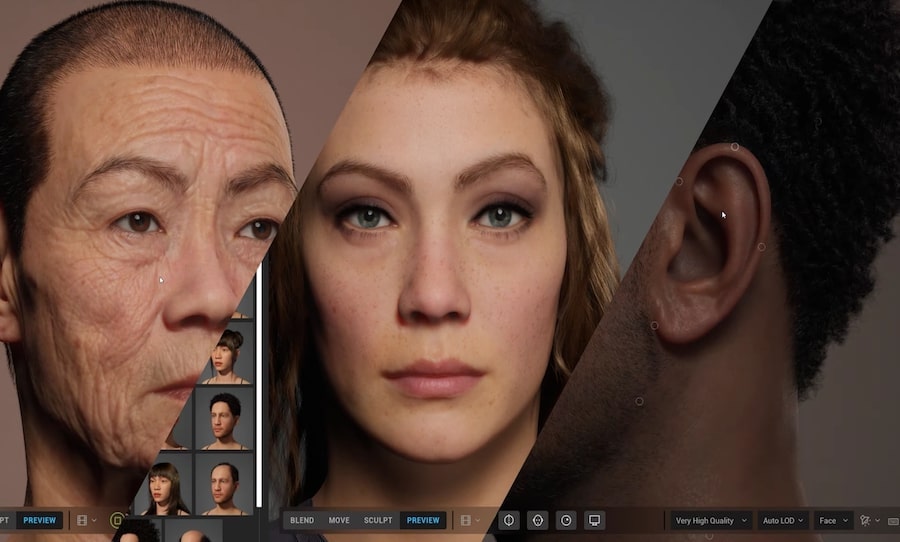

The system uses five source texture maps (normal, crease, ambient occlusion, skin redness and a flow map) from which Character Creator calculates three derived 4K maps: diffuse, normal and roughness. The textures themselves are derived from scans of real actors, optimised for the topology of Character Creator’s CC3 Base+ (CC3+) characters. The wrinkles can be triggered by keyframe animation, or in real time by motion-capture data or Face Puppet, the facial puppeteering system in Reallusion’s iClone animation software.īased on high-resolution scanned textures, isolated into facial regions by masks It automatically generates wrinkles on a character’s face in response to changes in expression, layering finer, texture-based wrinkles over the larger folds of flesh generated by Character Creator’s expressions system. The dynamic wrinkles system is one of the longest-awaited features in Character Creator, having been originally scheduled for Character Creator 3.3 in 2020. Long-awaited dynamic wrinkles system automatically adds detail to facial animation Other changes include the option to export heads in a format usable with Epic Games’ MetaHuman framework, and updates to the AccuRig auto-rigging system and GoZ bridge to ZBrush. The update adds the much-anticipated dynamic wrinkles system, which automatically generates wrinkles on a character’s face in response to changes in expression, adding realistic detail to facial animations.

Reallusion has released Character Creator 4.2, the latest version of its 3D character creation tool.


 0 kommentar(er)
0 kommentar(er)
